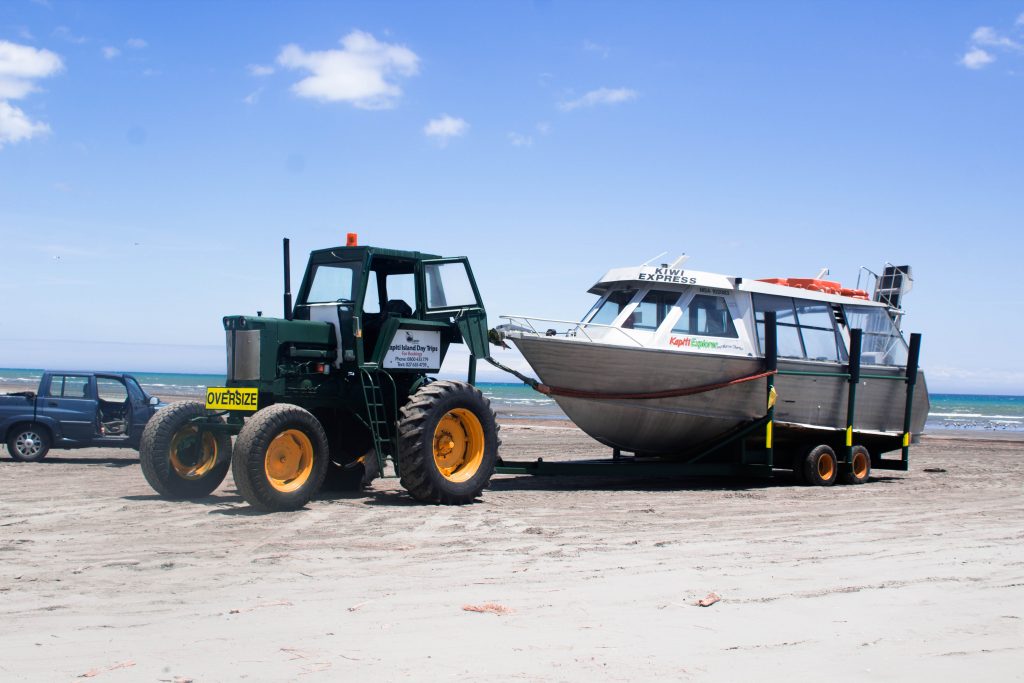KĀPITI WATCHTOWER
This proposal for a new Kāpiti Island visitor centre on Paraparaumu Beach, developed with students at the Wellington School of Architecture, turns the tourism industry’s thirst for images toward environmental observation.
Kāpiti Island is a bird sanctuary approximately 5km off the west coast of the lower North Island of New Zealand. Access to the island is by approved tour operators only. Because of the long shallow beach on the mainland it’s not feasible to build a pier for the boats without going a long way out to sea, so visitors get onto a boat while it’s on the trailer which a tractor then reverses into the sea.

Biosecurity for the island is critical for the ongoing protection of native birds and while visitor numbers to the island are set to grow significantly, there’s currently no visitor centre and no permanent biosecurity checkpoint. The brief for this project was to develop a facility on the very changeable mainland coast where visitors can learn about the island and go to the boats through a permanent biosecurity checkpoint.


Aggregated data is a big part of how we understand nature now, but it is not normally a big part of how we experience it through architecture. The objective of our proposal was to develop a nature tourism building that brings the experience of a natural environment together with aggregated data about how that environment is changing. The resulting proposal is organised around the axes of a three-dimensional grid. Within each axis are a number of small kiosks. These accommodate a café, store, biosecurity checkpoint, information centre, and what we have called, a Museum of Itself (MOI).

Selfie culture puts the tourist themselves into the foreground of their own gaze. Rather than present this as a narcissistic turn, we propose to exploit it. The MOI is a space to exhibit selfies taken by visitors in front of the Kāpiti Watchtower. The timber poles that repeat across the whole structure are painted with stripes at 250mm intervals, so the photos would reveal measurable changes to the sand dunes, tides, vegetation, stream, and the buildings in the village behind it. Our proposal therefore, redeploys the indulgent culture of selfies as a tool for environmental observation. The selfies would collect over the life span of the building into a visual database of environmental change displayed in the MOI. So instead of the environment being all about moi, so to speak, MOI is all about the environment.
Awards:
* 2018 Global Architecture and Design Awards (GADA)
Runner up (Transportation Concept category)
* 2018 AAA Visionary Architecture Awards
Winner (Open Work in Progress category)
Background: This project was part of a group research project at the Wellington School of Architecture funded by the Maclean Trust.
Design Team: Sam Kebbell, Cam Wilson, Callum Leslie, Riley Adams-Winch, Martin Bryant (landscape), Andrew Charleson (structure)
Other Researchers: Jason Tan, Joe Batchelor, Will Hope, Elise Cautley, Ryan Esselink.
